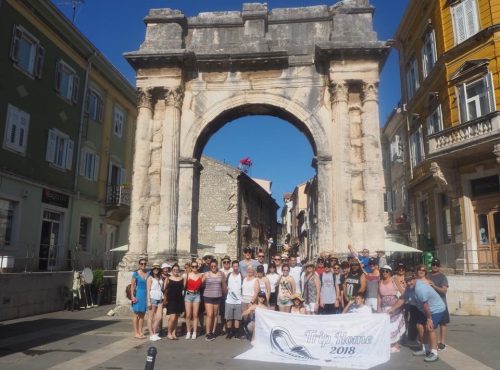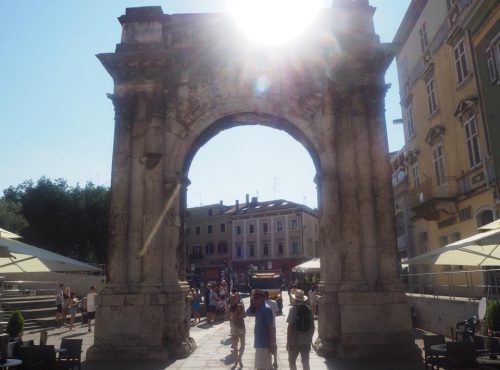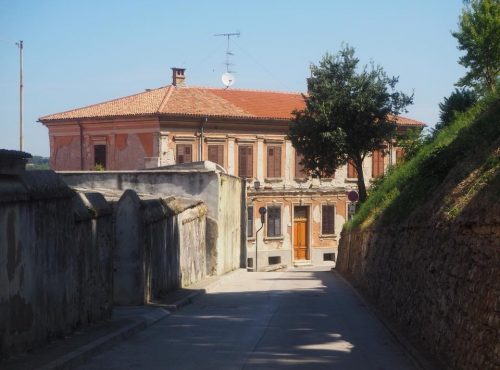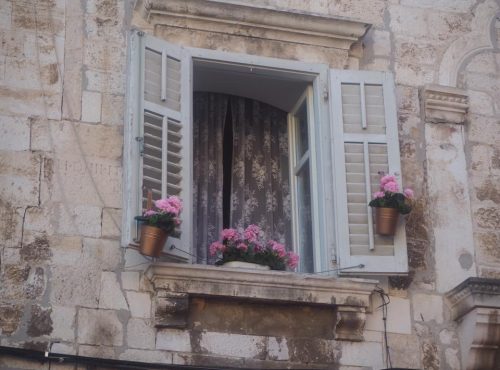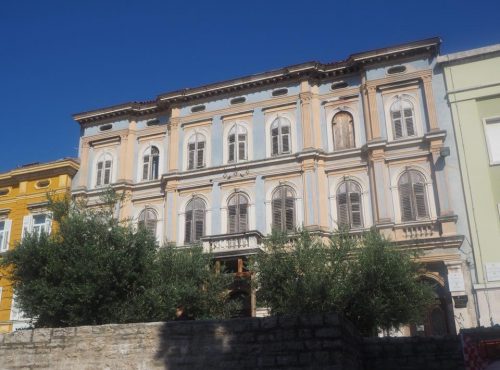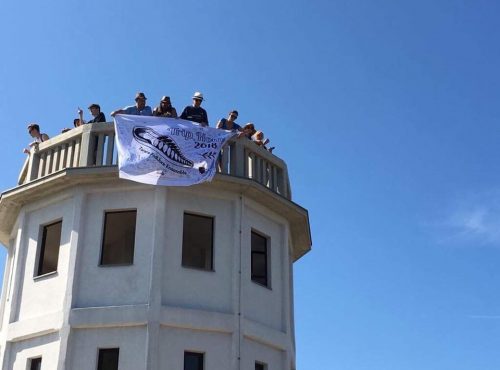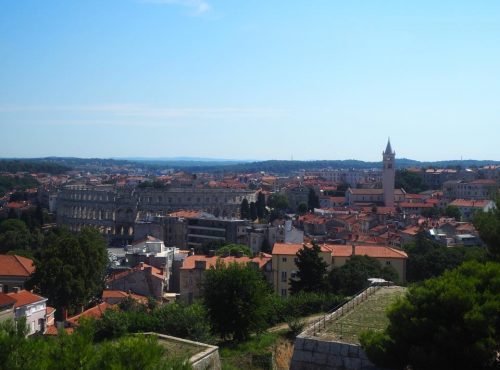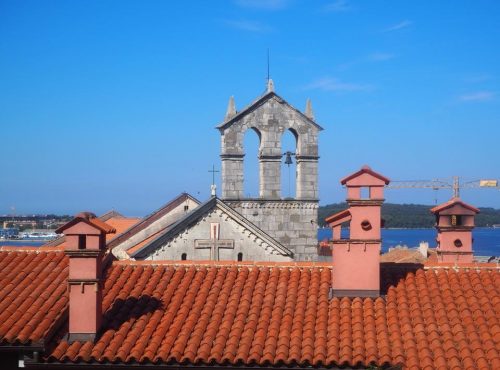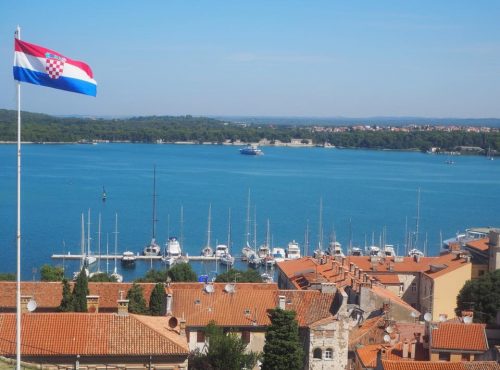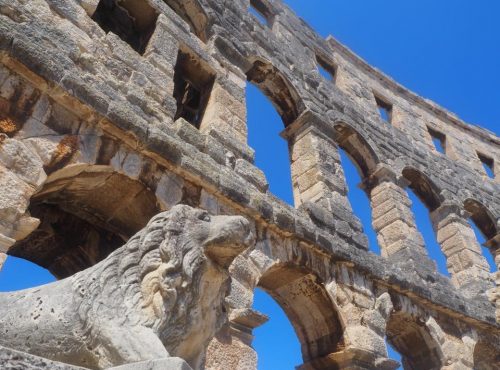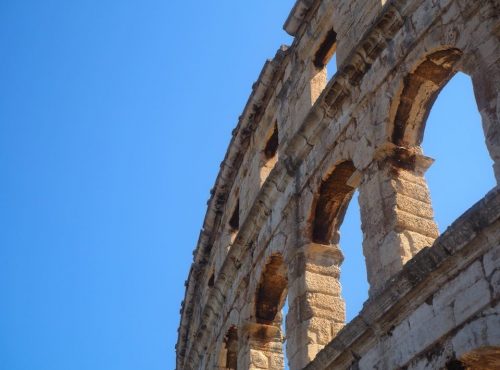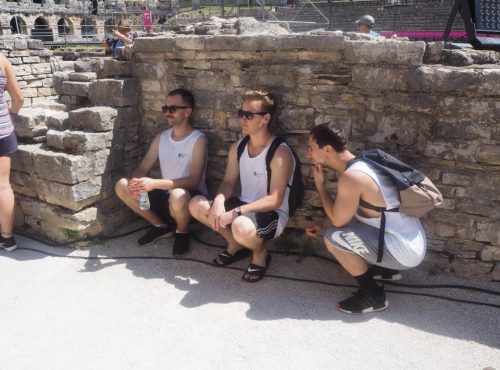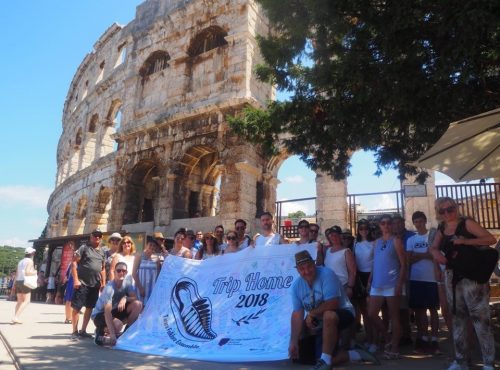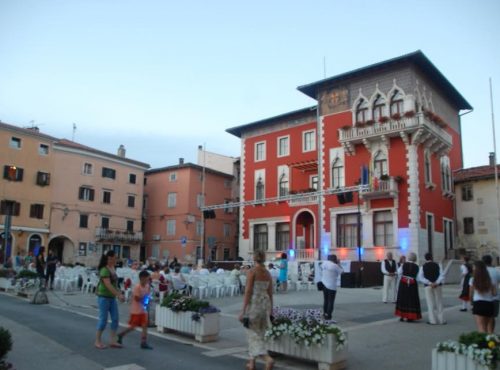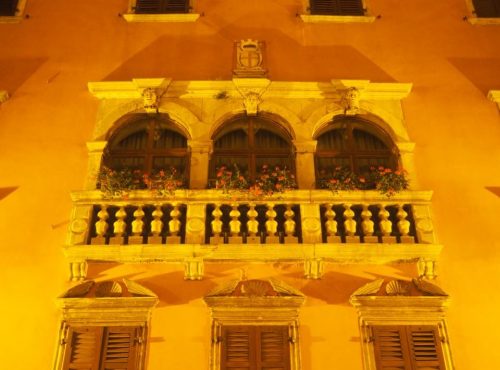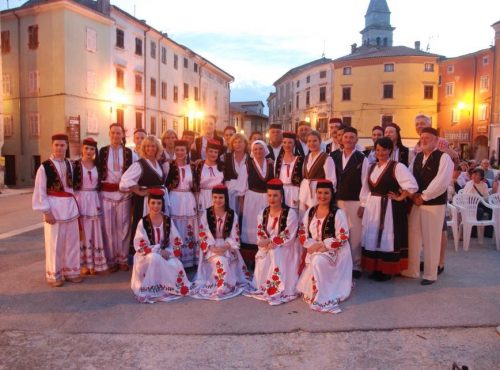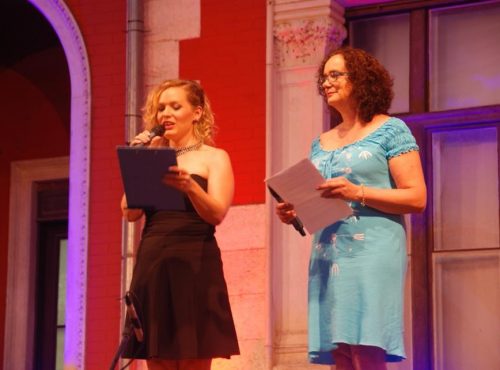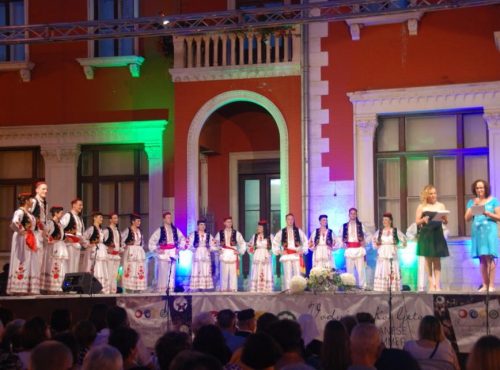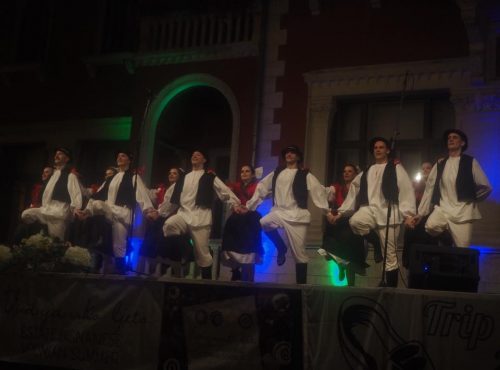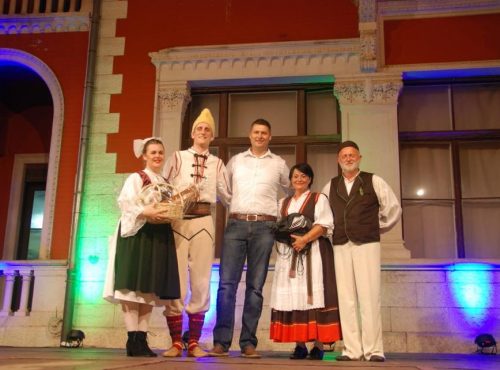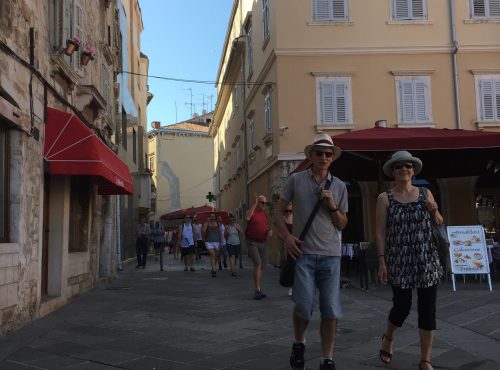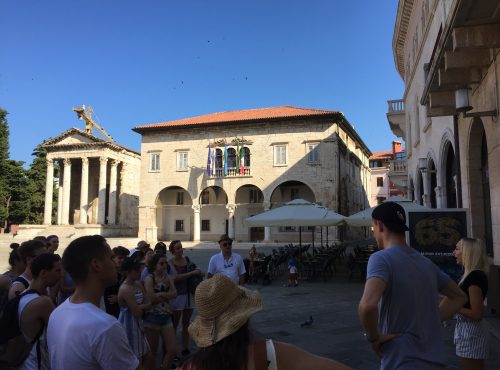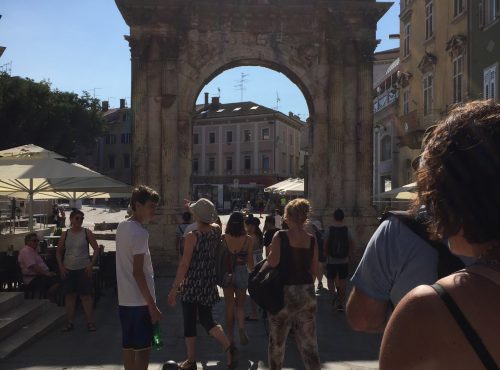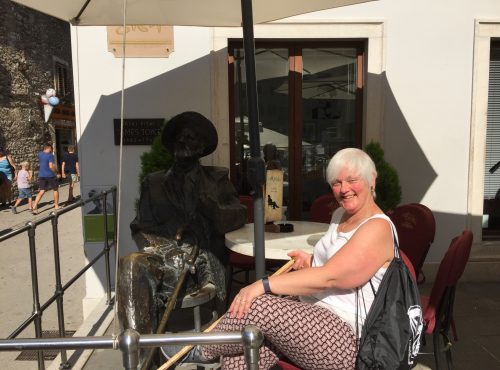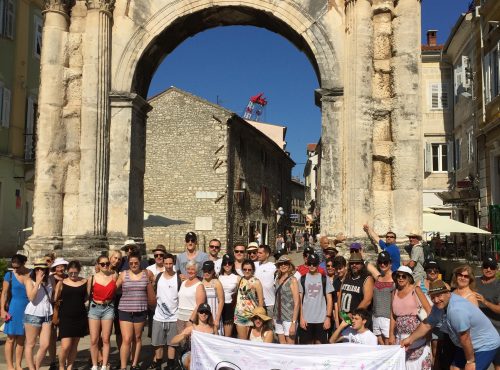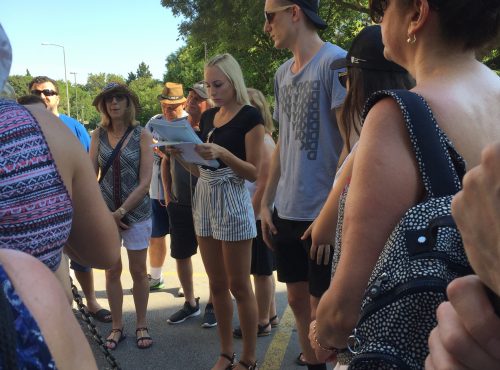Our first day in Croatia has been absolutely amazing!!! We are in the beautiful Pula in Istra. Our morning was spent partaking in a lovely walking tour through Pula town which included a visit to the spectacular Pula Arena, a colosseum from Roman times. This was very welcome after being on the bus for 12 hours the previous day. The increase in temperature has also been very noticeable and the clear blue sea has been a welcome sight. In the evening we performed our first concert here in Croatia in Vodnjan. Photos from the concert in our next post – Mara Blucher.
Our first performance in Croatia was absolutely amazing! We got to perform on a massive outdoor stage in the middle of the big and packed town square in Vodnjan. We performed a full show, dancing five choreographies alternating performances with the local kolo group. This was awesome but also very hectic as we only had one dance between performances and had to get changed extremely quickly. All our performances were introduced in three different languages: Croatian, Italian and English. The lovely Vanya Piacun who does all our MC’ing in New Zealand took on the role of taking care of the English introductions. It was nice hearing a familiar voice on stage before performing. What was amazing about this show was the response of the audience, they were clapping and cheering the whole way through while we were dancing and also singing along to the old music while we were dancing the New Zealand Dalmatian Kolo. After the show we had a beautiful meal before all passing out ready for another big day tomorrow – Mara Blucher.
More about our location and our day
The Triumphal Arch of the Sergi, best known as the Golden Gate, was erected by the Sergi family, a powerful Roman family which had maintained its power and glory through centuries. It was named Porta Aurea or the Golden Gate due to its lavish decorative arch or the gild on the town gate supporting the town walls as well as the triumphal arch at that time. The gate and the walls were destroyed in the 19th century when the new urbanisation plan was adopted under which the expansion of the town core had been planned.
The Amphitheatre, popularly called the Arena of Pula, was once the site of gladiator fights. It was built in the 1st century AD during the reign of Emperor Vespasian, at the same time as the magnificent Colosseum in Rome. The ground plan is elliptical, the longer axis measuring about 130 m and the shorter one about 100 m. Gladiator fights took place in the central flat area called the arena, while the spectators could sit on the stone tiers or stand in the gallery. It is believed that the Amphitheater could seat about 20,000 spectators. Local limestone was used for its construction. In the Middle Ages it was the site of knights tournaments and fairs. Today, it is the venue for many different events – Pula Film Festival, various concerts, opera, ballet and sports competitions, and it has a capacity of about 5000 spectators.
Amidst Turkish invasions, refugees fleeing to Istria, and the plague all happening over 1400s-1600s, one significant historical fact is that by around 1400-50 the western side of Istria was dominated by Venetian Empire, with the eastern side dominated by the Austrian Empire. But with the Austrian Habsburgs being a relatively weak influence, Pazin County was the area that witnessed numerous examples of Croatian literature under a strong Glagolitic influence. Following Napoleon’s occupation of Italy and the Peace of Campoformio in 1797, the French gave Austria Venice and the Venetian part of Istria, and Dalmatia to Austria in exchange for the Netherlands and Lombardia.
In 1856, Austria built its main naval arsenal in Pula, and since 1866, Pula became the capital port of the Austrian Empire Navy. It contributed to Pula’s sudden urban development. During only half a century, the population of Pula increased as much as thirty-fold.
We enjoyed our walking tour of Pula which included the Roman Temple of Augustus and a life size bronze statue of the Irish author James Joyce, who lived in Pula for a short time.

